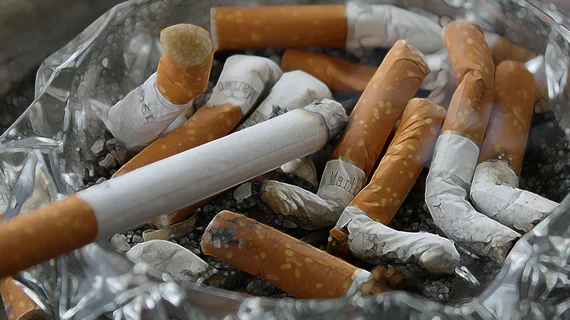How radiologists can help patients quit smoking
Onsite smoking cessation support during CT lung cancer screening appointments could result in more cigarette smokers kicking the habit. And radiologists can help.
When given the opportunity to consult with a smoking cessation practitioner during an annual lung cancer screening, the majority of patients would likely accept the added help, two new analysis show.
The first, published in Current Problems in Diagnostic Radiology, indicates that radiologists could play an integral role in encouraging patients to stop smoking during their CT lung cancer screening appointment. In that study, participants were offered a brief 10-minute consultation with a radiologist to discuss their CT findings. Nearly 90% reported feeling more more motivated to quit smoking and continue annual screenings after the consultation. [2]
A separate study included more than 2,000 active smokers who were offered additional support during their appointment. Of those, nearly 90% accepted the help.
What’s more, follow-up data revealed that with continuous support, many of those who opted for support remained smoke-free four weeks after their screening. This finding was consistent across multiple demographics.
Those who were most dependent on nicotine were also the most willing to accept the offer for additional support, although they were most likely to struggle in the process of quitting as well.
The new research is published in the European Respiratory Journal, where experts highlighted the need for dedicated funding directed toward offering such support to smokers, stating that it could help reduce smoking-related deaths.
“The high uptake of smoking cessation support and promising quit rates reported across a range of participant demographics indicates that adding stop smoking support as an integrated part of the national lung cancer screening program has the potential to reduce all-cause smoking related morbidity and mortality,” Professor Rachael Murray, of the School of Medicine at the University of Nottingham, and leader of the research, said in a release on the findings. “Protected, dedicated funding must be considered by policy makers in order to ensure the national screening program realizes its’ full potential.”
The study was conducted in Europe, but its results are also relevant in the United States, where there are nearly 30 million people still actively smoking, according to data from the Centers for Disease Control and Prevention (CDC).
Despite millions qualifying for CT lung cancer screening in the U.S., several analyses in recent years have highlighted the dismal uptake of the exam. Even fewer complete the exam annually, as is recommended by the United States Preventive Services Task Force.
Low-dose CT lung cancer screening is proven to detect cancer earlier. Data suggests that the exam increases survival rates of the deadly disease by as much as 80% for individuals who comply with the recommended guidelines.

